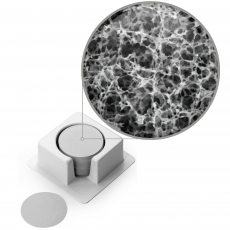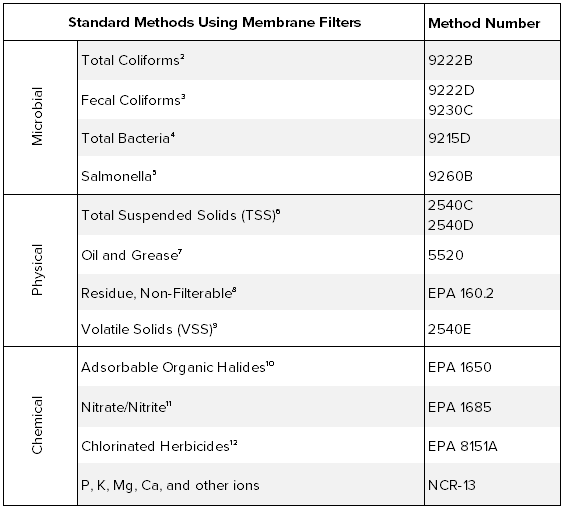Membrane Filters for Groundwater Analyses

Groundwater is a vital natural resource; it provides drinking, household, and irrigation water across the country and the world. Over half of the United States population relies on groundwater as their drinking water source.1 Unfortunately, in some geographical regions, groundwater supplies are at risk of depletion and contamination. Pollutants can originate from septic systems, landfills, underground oil and gas tanks, and various atmospheric contaminants. Emerging issues to assess in groundwater testing are the impacts of hydraulic fracturing, sea water intrusion, and microplastics accumulation.
In the US, organizations like the US Geological Survey (USGS) sample and analyze groundwater to monitor water availability and water quality. Scientists run tests on the physical, chemical, and microbiological characteristics of groundwater sources, and use this data to monitor and forecast how these factors might be impacted by increasing human consumption and climate change.

Mixed cellulose ester (MCE) membranes are recommended for use in many microbiological test methods. We offer 0.45 µm pore size membranes designed for retention and optimal recovery of Coliform, Fecal Streptococci, and Serratia marcescens, along with 0.65 pore size µm membranes for retention of Fecal Coliform and Saccharomyces cerevisiae. These membranes are available in both black and white, sterile and non-sterile, gridded and/or padded options to ensure that customers can find the right membrane for their filtration and colony quantification methods.
Sterlitech’s TSS and VSS Glass Fiber filters feature high purity, fast flow rate, and high loading capacity, making them ideal for Total Suspended Solids and Volatile Solids sample testing. For oil and grease testing procedures, a cellulose filter paper with low ash content (ex: Grade No. 5B or CFP43) is recommended quantitative analysis.
Polycarbonate Track Etched membranes are often employed for preparing water samples for chemical analyses, because they have very low levels of extractables and leachate. The 0.4 um PCTE is ideal for sample filtration prior to photometry, while AOX PCTE is specially designed for the detection of man-made pollution (organic halides) in groundwater. Cellulose Filter Papers are also used for chemical testing, such as CFP1 Grade for Chlorinated Herbicides or CFP42 for Phosphorous.
It is essential to observe and report the status of our groundwater, as it’s one of the most important and vital natural resources. If you are in the US and interested in water quality data for your region, thousands of USGS reports are available online.
Sterlitech offers a wide variety of membrane filter options and equipment for environmental testing, from water to soil and air samples. Please visit our Environmental Testing page for more information.
References:
[1] https://www.groundwater.org/get-informed/facts.html
[2] https://www.nemi.gov/methods/method_summary/5581/
[3] https://www.nemi.gov/methods/method_summary/5587/
[4] https://law.resource.org/pub/us/cfr/ibr/002/apha.method.9215.1992.pdf
[5] https://www.standardmethods.org/Store/ProductView.cfm?ProductID=376
[6] https://www.nemi.gov/methods/method_summary/9816/
[7] https://www.standardmethods.org/store/ProductView.cfm?ProductID=41
[8] https://www.nemi.gov/methods/method_summary/5213/
[9] https://www.norweco.com/html/lab/test_methods/2540efp.htm
[10] https://www.epa.gov/sites/production/files/2015-10/documents/method_1650c_1997.pdf
[11] https://www.epa.gov/sites/production/files/2015-10/documents/method_1685_draft_2001.pdf
[12] https://www.epa.gov/sites/production/files/2015-12/documents/8151a.pdf
- Most Viewed Blog Articles (5)
- Company News (285)
- Emerging Technologies (64)
- Microbiology and Life Science News (93)
- Water and Fluid Separation News (97)
- Filtration Resources (93)
- Product News (19)


![Join Sterlitech at BIO 2024 [Booth #5558]: Exploring the Future of Biotechnology](https://www.sterlitech.com/media/blog/cache/300x200/magefan_blog/b4.jpeg)



